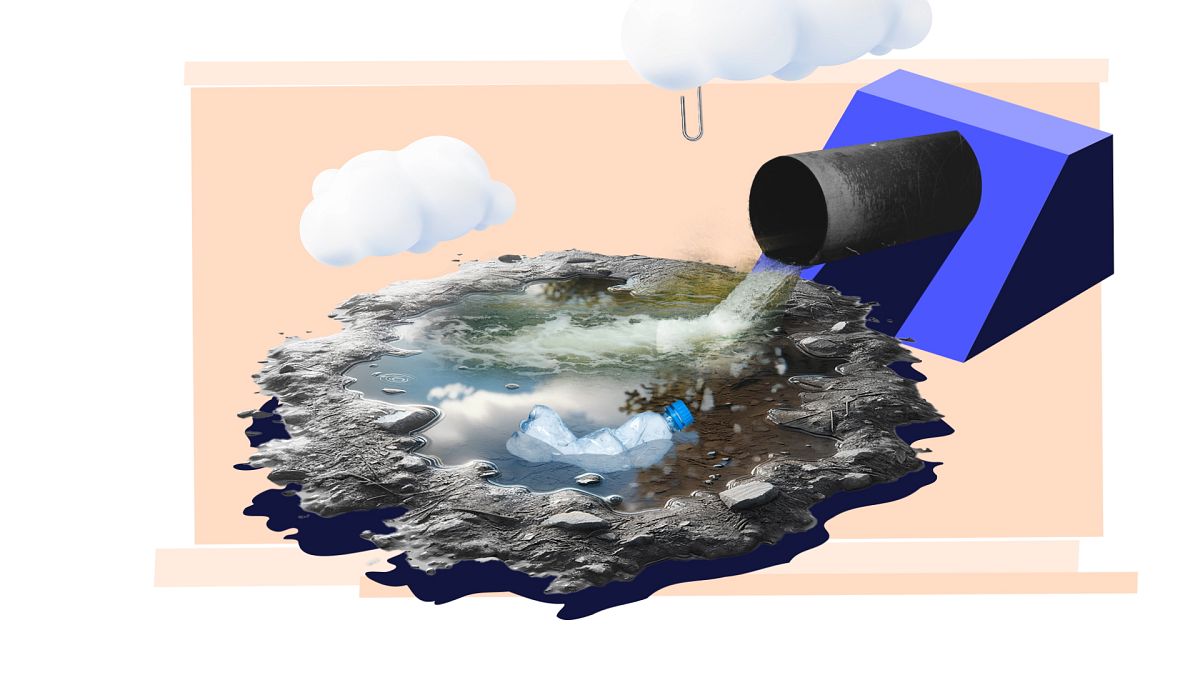Europe’s waters have been becoming more polluted over decades, mainly due to mismanagment of agriculture, industry and sewage treatment. In this Crash Course we dig into the alarming statistics and explore what the EU is doing about it.
Water is nature’s most precious resource, impacting our daily lives on every level. In Water Matters we explore in detail the complex issues of water management in Europe; from tackling pollution to responding to floods and droughts. Watch our one-minute Crash Course in the video above for a dynamic explainer on the causes, consequences and challenges involved.
Months of unusually high rainfall have replenished ground water levels in many parts of Europe, offsetting the threat of shortages in the short term, at least. However, Europe still faces numerous challenges in relation to this essential resource, with pollution among the most serious.
Groundwater pollution rising for decades
Decades of mismanagement have allowed our rivers, lakes and seas to be polluted from a range of sources, including agriculture, industry and sewage from ageing sanitation treatment infrastructure. Climate change, declining biodiversity and ecosystem degradation have all exacerbated the problem.
Water pollution poses significant risks to our health. It spreads diseases like cholera and dysentery and can cause other, long-term illnesses. And there can also be negative consequences for the environment and the economy, in terms of tourism revenue loss, and reduced agricultural productivity. It also affects industries reliant on clean water sources.
Some of the statistics make for grim reading. For example, 28% of Europe’s groundwater is polluted.This is where most of our drinking water comes from. It costs utility companies billions of euros to remove the nitrates and pesticides caused mainly by modern agriculture practices.
Pollution also comes from urban environments, plastics, sewage, and cooling water from power plants. The run-off inevitably ends up in our waterways, as another alarming figure reveals: 22% of Europe’s streams, rivers, lakes and seas are affected.
The statistics in detail (EU Commission’s Directorate-General Environment)
· The overall environmental costs ofnitrogen pollution costs are estimated at between EUR 70–EUR 320 billion per year in the EU.
· In 2022, 85.7% of bathing water sites were rated excellent in the EU and minimum water quality standards were met at 95.9% of sites.
· Unsafe water kills more people each year than war and all other forms of violence combined.
· 81% of marine waters, 31% of coastal waters, 36% of rivers, and 32% of lakes in the EU are eutrophic – this is an overgrowth of plants like algae, caused by too many nitrates, which then choke off other plant and animal life.
· 22% of Europe’s surface water bodies and 28% of the groundwater area are significantly affected by diffuse pollution from agriculture, both by nutrients and pesticides.
· 230,000 tonnes of plastic enter the Mediterranean Sea from land-based sources each year; additionally, 20,000 tonnes comes from shipping activities.
· Europeans are concerned about pollution, with 69% considering it the main threat to their water supply.
Restoring Europe’s waterways
Addressing these problems requires wide-ranging and dynamic responses by multiple sectors. As a starting point, pollution has to be tackled at source with sustainable agriculture, better wastewater treatment, less plastic waste and by restoring ecosystems.
The pathway to solutions is laid out in overarching policies from the European Commission. The EU’s Water Directive regulates lakes and rivers while the Drinking Water Directive strengthens the quality of our tap water. The European Green Deal includes a zero pollution action plan to improve legislation on preventing pollution.
The actions taken, in detail (EU Commission’s Directorate-General Environment)
· Water Framework Directive: commits European Union member states to achieving good qualitative and quantitative status of all water bodies.
· Urban Wastewater Treatment Directive: Sets standards for treating wastewater to protect aquatic environments.
· The Nitrates Directive: Aims to protect water quality across Europe by preventing nitrates from agricultural sources that pollute ground and surface waters, and by promoting the use of good farming practices.
· Drinking Water Directive is the EU’s main law on drinking water. It concerns the access to, and the quality of, water intended for human consumption to protect human health.
· Bathing Water Directive: Aims to protect the environment and the health of Europeans by attaining good bathing water quality throughout the EU.
· Environmental Quality Standards Directive: Aims to achieve good surface water chemical status.
Being water aware
However, we can’t just legislate our way out of a problem that has been developing over decades. Citizens can play their part too, by recycling and minimising chemicals and single use plastics, participating in clean-up initiatives and generally being more aware of water use. A fundamental change in mindset and behaviours will go some way to ensuring a clean and healthy water supply for generations to come.

